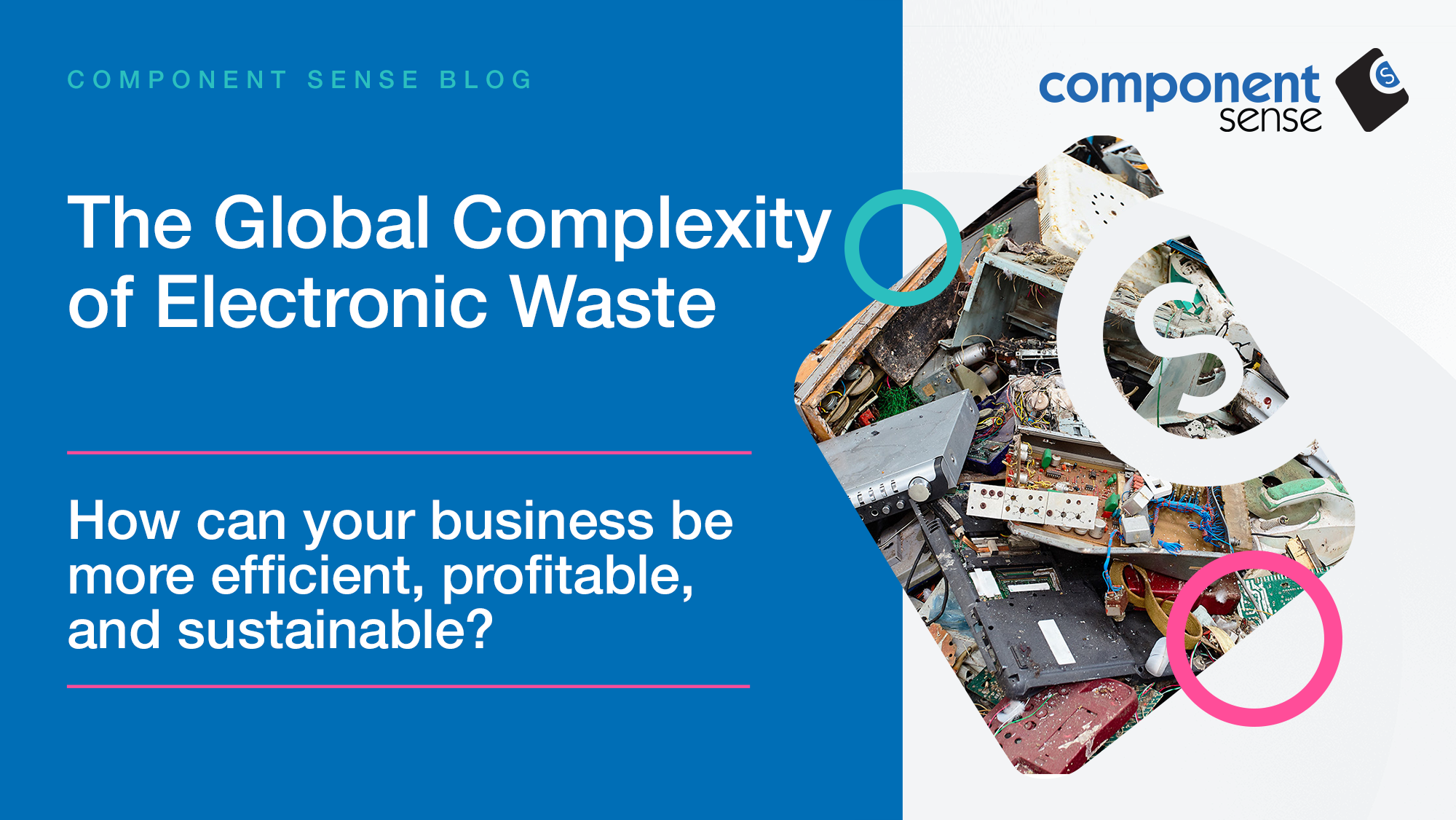The Global Complexity of Electronic Waste

We would like to discuss electronic waste (e-waste) legislation and its implications in the context of complex global economic structures.
Component Sense is dedicated to supporting sustainable solutions within the electronics industry, and we are on a mission to lead manufacturers towards zero waste. We therefore aim to shed light on problematic aspects of our industry, provide some positive examples, and suggest potential solutions!
In recent years, headlines have highlighted the prevalence of so-called "must-shred contracts" and the wasteful disposal of unused products in support of new launches. In 2017, Apple apologised for intentionally producing batteries that were scheduled to slow down. However, in 2020, Apple sued a recycling firm for reselling their functional products. In 2021, e-commerce giant Amazon faced criticism for its practice of destroying new items like laptops, tablets, and books. In the case of our industry, data safety plays a huge role in manufacturers’ demands to shred stock rather than keeping them on the market.
Why do successful companies take such wasteful steps?
Firstly, planned waste is cost-effective. Often, shredding obsolete stock is more profitable than reselling it. Secondly, designing products with a short lifespan encourages sales of new products. Keeping unsold items in the market, even at a discount or as donations, can limit the sale of new models. Lastly, companies are concerned about revealing their industrial knowledge to competitors, so they prefer to shred products rather than repair them.
The amount of e-waste produced annually is staggering. E-waste is estimated to be worth around $50.9 billion annually, as a single electronic product can contain up to 60 precious elements. Unfortunately, only 17.4% of our electronic waste is saved from landfills.
What does this mean for us as consumers?
Western economies tend to view consumerism in a linear fashion: we want more, faster, and newer. This mindset, ultimately,contributes to the enormous amount of waste generated. However, our planet has finite resources that cannot sustain this approach. Thus, we need to reconsider the design of our products and consumption. Initiatives such as Scotland’s Circular Economy Bill and the EU's "right to repair" rules for phones and tablets, along with Extended Producer Responsibility (EPR) regulations, aim to curb companies' wasteful practices.
But what is the issue with e-waste?
E-waste is not only financially valuable, it is also highly toxic. E-waste contains toxins such as lead, mercury, polybrominated flame-retardants, and PFAS. These elements are known as "forever chemicals" because they do not naturally break down and can pose health risks, including cancer.
What happens to e-waste?
Currently, Western e-waste is dumped in landfills of poorer regions of the planet. This leads to polluted water supplies, food sources, and significant health risks for local communities. A prominent e-waste dumping ground is in Accra, Ghana, known as ‘Agbogbloshie.’ Agbogbloshie is a paradox: whilst it is inherently damaging to health and the environment, it also sustains the local secondhand market and plays a vital role in Ghana's economy.
Can such a harmful structure become economically beneficial?
It is important not to overlook the global exploitation of e-waste. In a Guardian article, journalist Oliver Franklin-Wallis interviews a local electronic shop owner, Evans Queye. Queye gives an insight into how Ghanaians employ themselves with waste, and reveals widespread unaddressed health issues.
Franklin-Wallis reports on the flourishing secondhand market in Ghana, explaining how people make a living out of the e-waste. Many Ghanaians are highly skilled in repairing damaged electronics. If a machine cannot be repaired, so-called ‘scrap boys’ take those items to Agbogbloshie. Repairers can then source specific parts to repair other devices. “If I need a part for a TV with a working screen but a broken power system, by chance, I might find the same TV with a broken screen, but the power system working.”
The major problem of e-waste is, of course, pollution. As Queye explains, destroying dumping grounds like Agbogbloshie is not a viable solution, as it just spreads the pollution all over the countryside, making trade harder without ensuring protection. Banning of e-waste from Ghana, he says, would also have a major negative impact on the economy. Instead, Queye calls for embracing second hand trade through formalised regulation. This would involve allocating an industrial zone, providing health care, applying safety rules, and giving workers formal recognition and social support. Ghana could thus make profit and invest in its economy, in a more safe and sustainable manner.
However, this solution is bittersweet, as Western waste still ends us in poorer regions around the world, exploiting people in need and highlighting wealth discrepancies.
Component Sense supports the aim of a circular economy. We specialised in E&O! We work closely with the manufacturers, helping them to streamline their stock. Also, we regard obsolete stock as a highly underestimated value. Instead of sending them to landfills to rott, reach out to us and we help you to transform your obsolete stock into profit. Our system aligns to the circular economy thinking and makes a great difference considering carbon emissions. In this way we hope to offer a solution in terms of climate change, and help regions to be not swamped with waste, but enabled through co-operations.